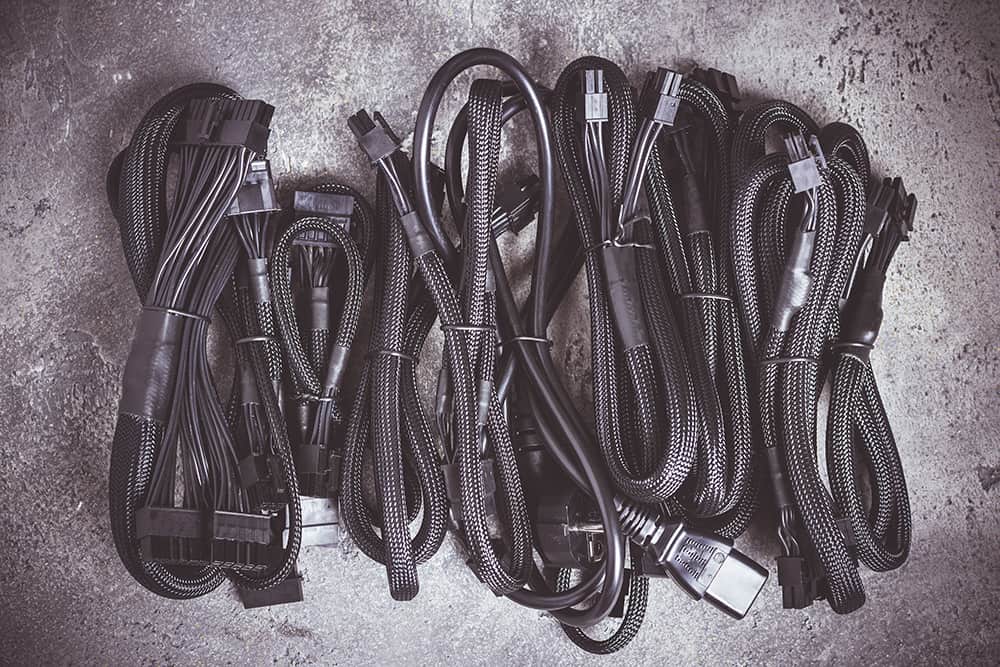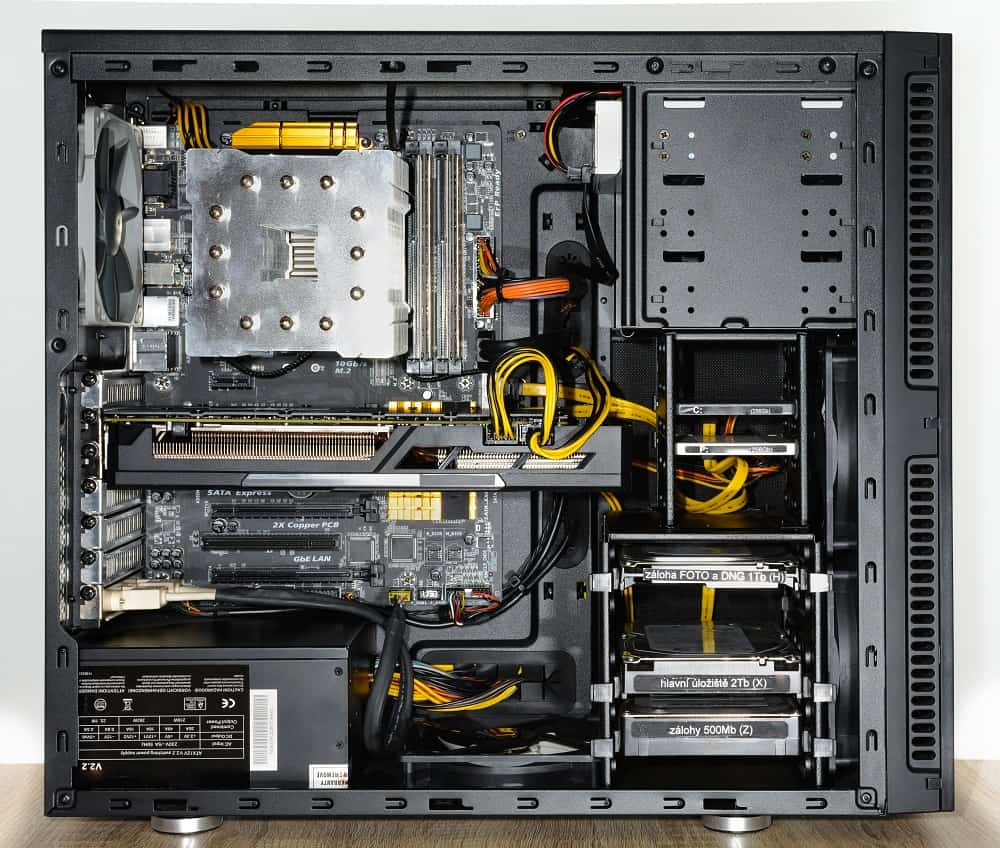The power supply unit is a computer component that connects directly to the electrical outlet and directs and distributes the current to the different computer parts. Traditional power supply units come with predefined and pre-installed connectors. However, with the demand for cable management, modular and semi-modular power supply units have become more popular.
Modular power supply units have connectors that are fully detachable from the PSU's main body. Whereas semi-modular PSUs have permanent and detachable connectors. The 24-pin connector always comes as permanent in semi-modular PSUs.
This article will discuss the differences between modular and semi-modular PSUs in terms of the degree of modularity, complexity, price, effects on airflow and temperature.
Modular vs Semi-Modular Power Supply Units (PSUs)
Degree of Modularity

Modularity in power supply units (PSU) refers to the degree of detachability of power supply parts, particularly the connectors, to the computer components.
Non-modular refers to a PSU that contains cables and connectors that are soldered onto the PSU's circuit board. These connectors are pre-defined and cannot be removed from the PSU.
Modular PSUs have connectors that can be detached from the main PSU. These connectors have individual ports where the user can attach a connector to power a specific computer component.
The primary advantage of using a modular PSU is the user's ability to attach and detach cables depending on usage scenarios.
The middle ground between non-modular and modular is referred to as semi-modular. The semi-modular PSU strikes a balance between permanent and detachable connectors. Several setups designate certain cables as permanent while others are detachable.
Among these variations, the 24-pin connector always comes as permanent. The PCIe, 8-pin, and CPU connectors may or may not come as permanent.
Complexity
When upgrading from non-modular to a fully modular PSU, there is a degree of complexity in terms of the types of cables and their compatibility with the PSU and the computer components.
Most modular power supply units have proprietary connectors that can only be connected to a specific brand and model of PSU. This is because the input connector is unique to the brand while the output connector is standard.
Due to the complexity of modular PSUs, semi-modular PSUs provide certain cables as pre-attached to help avoid compatibility issues. Most of the pre-attached cables in a semi-modular PSU have normal lengths which prevent them from coiling inside the computer.
Price
Modular PSUs are more expensive than semi-modular PSUs. However, the price difference justifies the corresponding flexibility that a modular PSU brings to the computer system in terms of accommodation for future upgrades.
A good modular PSU is typically 10-20% more expensive than non-modular. Semi-modular PSUs can provide a middle ground by allowing the user to still have space for future improvements while retaining certain essential connectors as non-detachable.
In terms of the overall pricing of a computer setup,, it is important to note that modular PSUs can fit in a mid-tower ATX case which is less expensive than a standard ATX case. The money saved from buying a mid-tower ATX case can be used to upgrade to a modular PSU.
Airflow and Temperature
Fewer unused connectors inside the computer system will allow for more efficient airflow. When PSU cables are left unmanaged it can cause nesting or the accumulation of dust and dirt which negatively impacts the intake of cold air and the exhaust of warm air.
Better modularity can therefore help manage airflow and temperatures in a computer system. Therefore, a modular PSU is better at optimizing airflow and temperature when compared to semi-modular due to the number of connectors inside the computer system, which is only limited to what is necessary for the user's specific setup.
Cable Management

Modularity directly affects the level of cable management in the computer system. Cable management is one of the most tedious tasks in setting up a computer because cable clutter can diminish the functionality and aesthetics of the system.
Modular PSUs minimize cable clutter, especially when swapping and replacing computer components. Having a more modular PSU adds a certain degree of convenience in cable management. While a non-modular PSU is cheaper and has a smaller footprint than a modular PSU, the number of soldered connectors can make cable management more complicated.
Unless the computer is designed to function as a server, the average user only needs around four to five connectors to power up a computer. Having a modular PSU allows the user to choose the necessary components and manage the cables properly. It also makes the entire computer system neater and easier to clean. Compared to a non-modular PSU, a modular PSU can save up to 1.5 meters of connector length inside the computer.
Additionally, a modular PSU is easier to remove from the computer and does not require the user to remove individual connectors from each component. Detaching and unscrewing the PSU from the computer's chassis can help make cable management easier.
Final Thoughts
A modular PSU provides great flexibility, helps with cable management as well as airflow, and temperature management.
Semi-modular PSUs, may be a good option for people on a budget looking for modularity as well as the other aforementioned factors.

